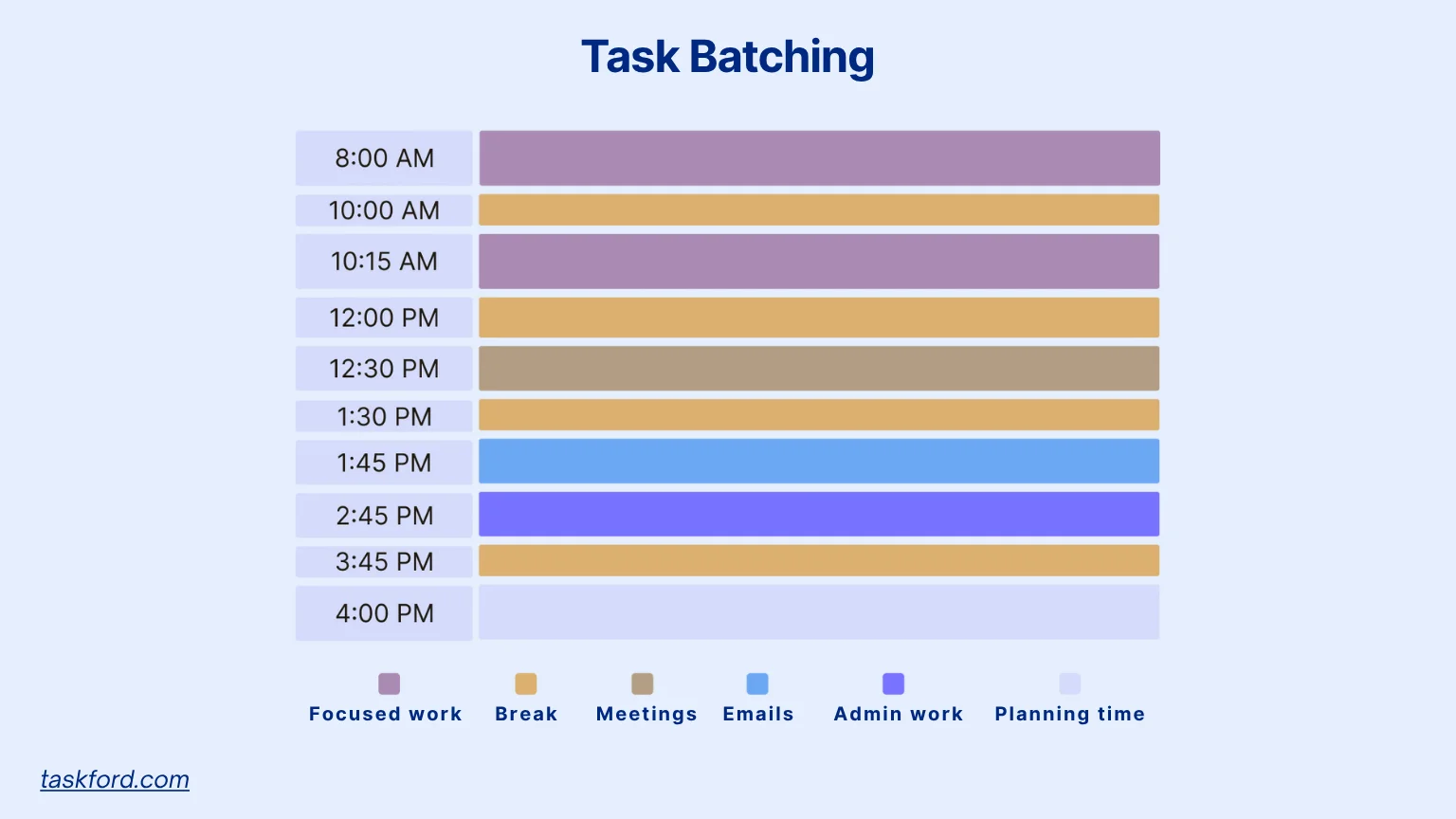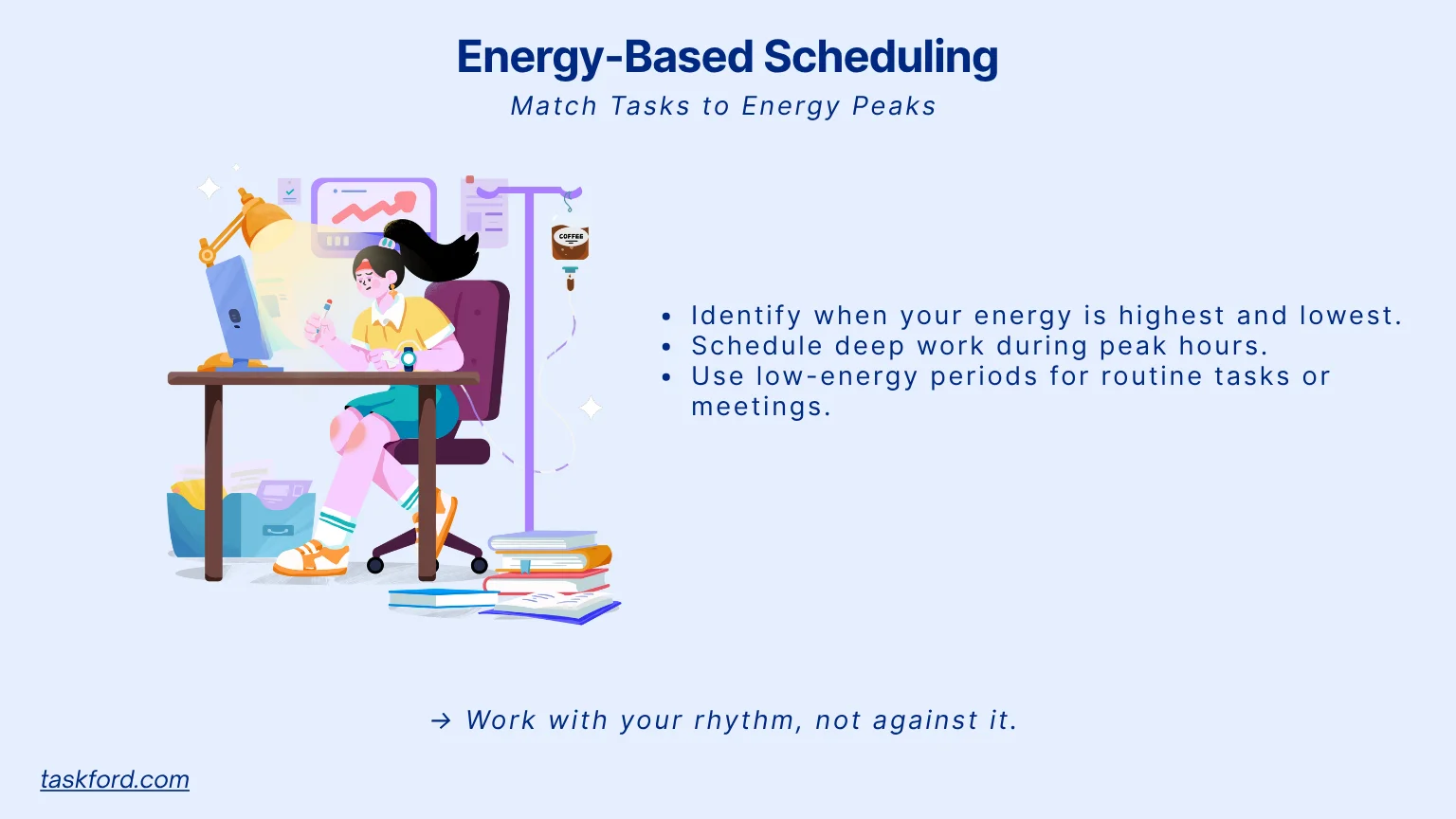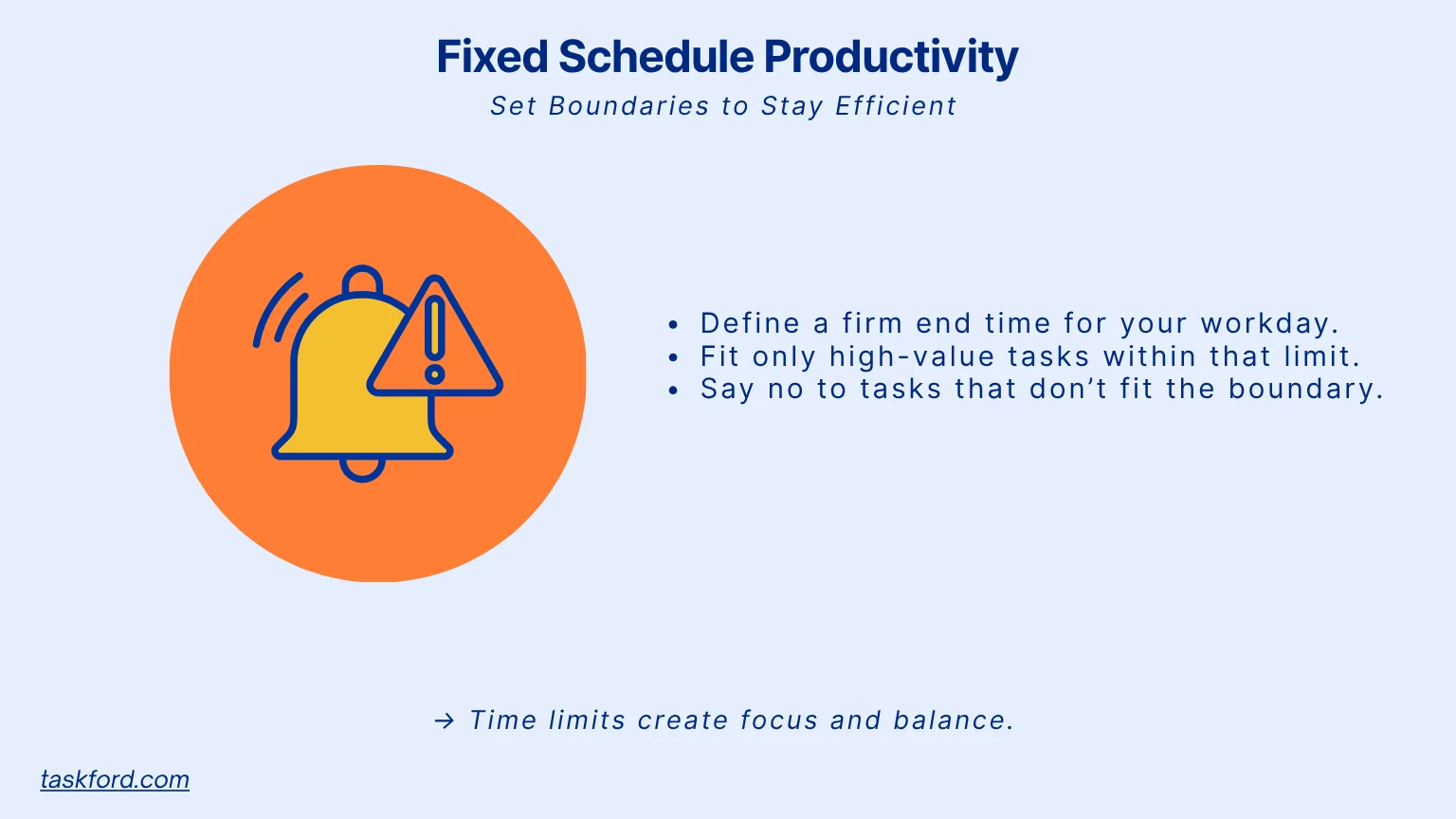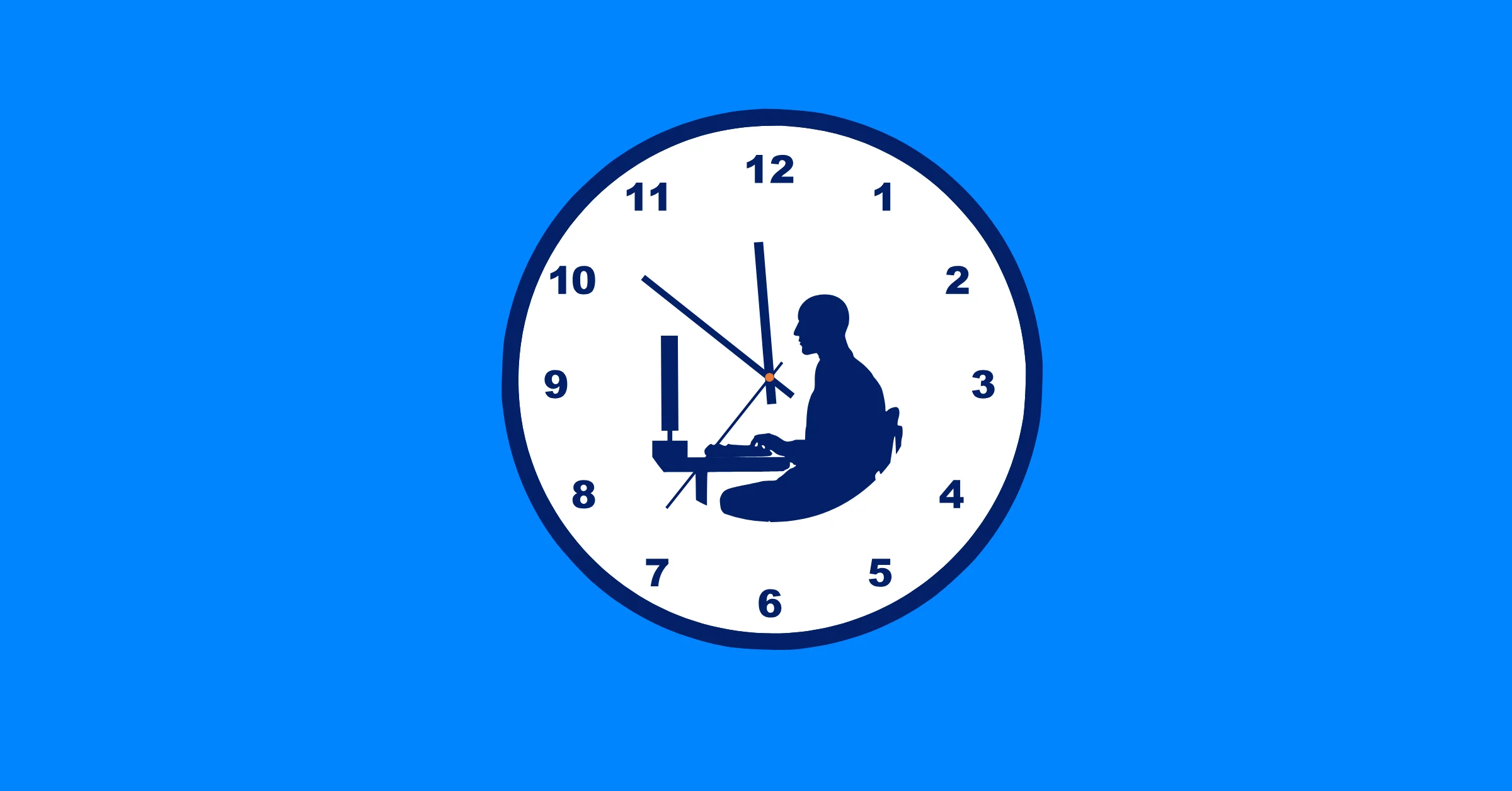Daily Time Allocation Techniques for Busy Professionals
Learn practical time allocation techniques to manage your day effectively, boost focus, and achieve consistent progress in demanding professional roles.
Many professionals feel they have too much to do and too little time to do it. Meetings multiply, priorities shift, and by the end of the week, most people realize they’ve spent more time reacting than progressing. The truth is not that there is never enough time, but that too much of it gets misplaced. The difference between those who stay buried under tasks and those who consistently move forward lies in how they allocate their time
Time allocation isn’t about tracking every minute; it’s about choosing where each hour creates the most value. Done well, it turns time from a constraint into a tool for meaningful progress. This article defines time allocation, explores the psychology behind it, and shares six practical techniques for applying it in busy professional lives.
Understanding Time Allocation
Time allocation is the strategic division of your working hours according to task importance, urgency, and energy level. It ensures that your focus and effort align with high-value activities rather than reactive tasks.
In a typical workday, people move between urgent requests, small administrative chores, and deep, complex projects. Without deliberate allocation, time gets consumed by what’s easiest to start, not what matters most. Effective time allocation provides a framework to prevent that drift.
The purpose of this approach is not to fit more into your calendar but to use your limited hours with precision. Combining with other time management strategies, professionals who master time allocation find themselves completing meaningful work while maintaining mental clarity and reducing burnout. They shift from managing tasks to managing impact.
The Psychology Behind Time Allocation
At its core, time allocation is about decision-making and prioritization. People often underestimate how long tasks will take or overestimate how much they can handle in a day. This leads to overcommitment and stress.
Several psychological factors influence how people allocate their time:
- The Planning Fallacy: The tendency to assume tasks will take less time than they actually do.
- Cognitive Overload: When too many choices or tasks compete for attention, focus drops sharply.
- Loss Aversion: People fear missing out on opportunities, so they say yes too often, stretching their schedules thin.
- Task Aversion: Hard or unpleasant tasks tend to be delayed, even when they’re important.
Understanding these biases helps professionals create more realistic schedules. Instead of relying on optimism, you learn to build in buffers, delegate, and prioritize by impact rather than by habit.
In short, good time allocation begins with self-awareness. You can’t manage hours effectively until you understand how you think about them.
Time Allocation Techniques for Busy Professionals
Below are six practical and research-supported techniques that can help professionals organize their day, reduce overwhelm, and focus on high-impact work.
1. Time Blocking

What it is: Time blocking divides your day into dedicated sections, each reserved for specific types of work. Rather than juggling multiple activities, you commit to one type of task per block.
How to do it: Start by identifying your core categories: deep work, meetings, administrative tasks, and personal routines. Assign them fixed blocks on your calendar, such as:
- 9:00 to 11:00 - Deep project work
- 11:00 to 12:00 - Meetings and calls
- 1:30 to 3:30 - Creative or strategic tasks
- 4:00 to 5:00 - Email and wrap-up
Treat each block as an appointment with yourself. During a block, avoid unrelated tasks or interruptions.
Why it works: Time blocking protects focus. It creates visual clarity in your schedule and limits distractions by giving every activity a defined home.
2. Task Batching

What it is: Task batching means grouping similar activities together so your brain stays in one operational mode longer.
How to do it: Collect small, repetitive tasks like replying to messages, scheduling meetings, or reviewing reports and handle them in one concentrated session. For example:
- Batch all client calls on Tuesdays and Thursdays
- Process emails twice daily instead of checking them constantly
Why it works: Every context switch costs mental energy. Batching minimizes those transitions and allows deeper efficiency. This technique is especially powerful for professionals managing multiple projects or client accounts.
3. The Eisenhower Matrix

What it is: Named after former U.S. President Dwight D. Eisenhower, this method helps prioritize tasks based on importance and urgency. It’s one of the clearest ways to allocate time strategically.
How to do it: Draw a simple 2×2 grid:
- Quadrant I: Urgent and Important - Do first
- Quadrant II: Not Urgent but Important - Schedule deliberately
- Quadrant III: Urgent but Not Important - Delegate
- Quadrant IV: Not Urgent and Not Important - Delete
At the start of each week, list tasks in each category. Then, use your Quadrant II list to design your time blocks for the week.
Why it works: The Eisenhower Matrix prevents urgency from dominating your schedule. It keeps long-term value at the center of daily time allocation, a key trait of effective project management.
4. Energy-Based Scheduling

What it is: Energy-based scheduling aligns your tasks with your natural energy rhythm instead of arbitrary hours.
How to do it: Track your energy levels across several days. Note when you feel most alert and when focus declines. Then, schedule your hardest, most analytical work during your peak hours. Assign lower-energy periods for meetings, communication, or administrative work.
For instance:
- Morning peak: strategy, writing, analysis
- Afternoon dip: meetings or collaborative tasks
- Late afternoon recovery: creative ideation or planning
Why it works: Not all hours are equal. Allocating tasks according to energy rather than time improves both output and quality.
5. Fixed Schedule Productivity

What it is: A method made popular by computer science professor Cal Newport, fixed schedule productivity involves setting a firm end time to your workday and organizing all tasks within that boundary.
How to do it: Decide when your workday ends such as 6:00 p.m. and refuse to extend beyond it. You’ll quickly learn to cut unnecessary activities and allocate time to what truly matters.
To apply it effectively, pair it with the Eisenhower Matrix. Focus your limited hours on Quadrant I and II work, and delegate or drop the rest.
Why it works: Constraints sharpen clarity. With a strict time boundary, you become more selective, efficient, and intentional with your schedule.
6. Weekly Review and Reallocation

What it is: A continuous improvement cycle for your schedule. Instead of repeating the same allocation patterns blindly, you regularly analyze what worked and what didn’t.
How to do it: At the end of each week:
- Review where your time actually went (using a calendar or time tracking app)
- Compare it with your intended allocation
- Identify time leaks and adjust future blocks accordingly
Why it works: Over time, this habit turns time allocation into a living system that evolves with your professional demands. It’s the difference between rigid scheduling and adaptive time management.
How to Combine These Time Allocation Techniques
Each technique is powerful alone, but the real benefits appear when you combine them. Integration allows your schedule to stay both structured and flexible.
- Start with Energy Awareness: Map your energy highs and lows across the week. This becomes your foundation for where to place time blocks.
- Use Time Blocking for Structure: Create core blocks for deep work, meetings, and routine tasks based on your energy rhythm.
- Batch Within Blocks: Inside each time block, batch similar tasks to stay in one cognitive mode. For example, handle all communication during your afternoon “admin” block.
- Prioritize Using the Eisenhower Matrix: Choose what to place in each block based on importance and urgency. This prevents low-value work from filling your best hours.
- Enforce Boundaries with Fixed Schedule Productivity: Protect your finish time. When you know the day ends at a set hour, your allocation decisions become sharper.
- Reflect Weekly: Review your calendar, assess outcomes, and adjust your next allocation cycle. Identify recurring distractions and eliminate them systematically.
Example Integrated Day:
- 8:30 to 10:30 - Deep Work (Quadrant II tasks, energy peak)
- 10:45 to 11:30 - Client Calls (batched)
- 1:00 to 3:00 - Creative Work (energy recovery)
- 3:30 to 4:30 - Emails and Admin
- 4:30 to 5:00 - Review and Plan Tomorrow
This structured yet flexible model lets professionals control their day rather than be controlled by it.
Integrating Time Allocation into Professional Routines
The true power of time allocation lies in making it a habit rather than a one-off effort. Below are actionable steps to integrate it smoothly into your professional routine:
1. Start with a Weekly Planning Session
Dedicate 30 minutes every Sunday or Monday morning to map out your priorities. Review ongoing projects, key deadlines, and personal commitments. Identify your “non-negotiable” blocks like deep work sessions, meetings, and breaks.
2. Use Technology Wisely
Tools like TaskFord can help visualize how your time is allocated across projects. Use color-coding or tags for important and high-priority tasks. Combine your calendar with task list to ensure alignment between daily actions and long-term goals.

3. Review and Adjust Regularly
At the end of each week, evaluate what worked and what didn’t. Were there tasks that consistently took longer than expected? Did meetings eat into your deep work blocks? Small, regular adjustments improve accuracy and accountability.
4. Communicate Your Boundaries
Inform your team or clients about your focused work hours. Shared calendars make it easier for others to respect your schedule. This builds a culture where structured time management is valued.
Common Pitfalls to Avoid
Even the most disciplined professionals face challenges when implementing time allocation. Recognizing these early can prevent frustration and keep the system sustainable.
- Over-Scheduling Every Minute: Packing your calendar too tightly leaves no room for recovery or unexpected tasks. Reserve at least 10 percent of your day as buffer time.
- Ignoring Energy Patterns: Not every hour is equal. Working on high-focus tasks when you’re tired leads to poor results and wasted effort. Align demanding work with your natural peaks.
- Confusing Urgency with Importance: Spending the day reacting to messages and minor issues can make you feel productive but leaves major goals untouched. Use the Eisenhower Matrix to stay focused on what truly matters.
- Treating the Plan as Rigid: Time allocation should guide you, not trap you. Adjust as priorities shift and projects evolve. Flexibility keeps the system realistic and sustainable.
- Skipping Reflection: Without regular review, your time allocation will drift from its purpose. Weekly reflection is what turns data into improvement.
Avoiding these pitfalls keeps time allocation practical and adaptable rather than overwhelming.
Conclusion
Time allocation is more than a scheduling tactic. It’s a deliberate act of professional design, the process of shaping your hours to reflect your values and goals. The professionals who master it are not necessarily busier; they’re simply clearer about what deserves their attention.
Start small. Block your day into focused segments, batch repetitive tasks, and build a weekly rhythm of review. As you refine your system, time allocation becomes second nature, a quiet yet powerful form of control in a world that constantly demands your attention. True productivity doesn’t come from doing more; it comes from allocating time to what truly matters.
Learn more
- 5 Project Time Tracking Myths That Are Holding Your Projects Back
- Lag and Lead Time in Project Management: Key Concepts and Calculation Methods
- 10 Practical Time Management Tools & Techniques That Actually Work
Making work simpler,
smarter, and more connected
Join our waitlist and be notified first.

Related Blog
Subscribe for Expert Tips
Unlock expert insights and stay ahead with TaskFord. Sign up now to receive valuable tips, strategies, and updates directly in your inbox.






